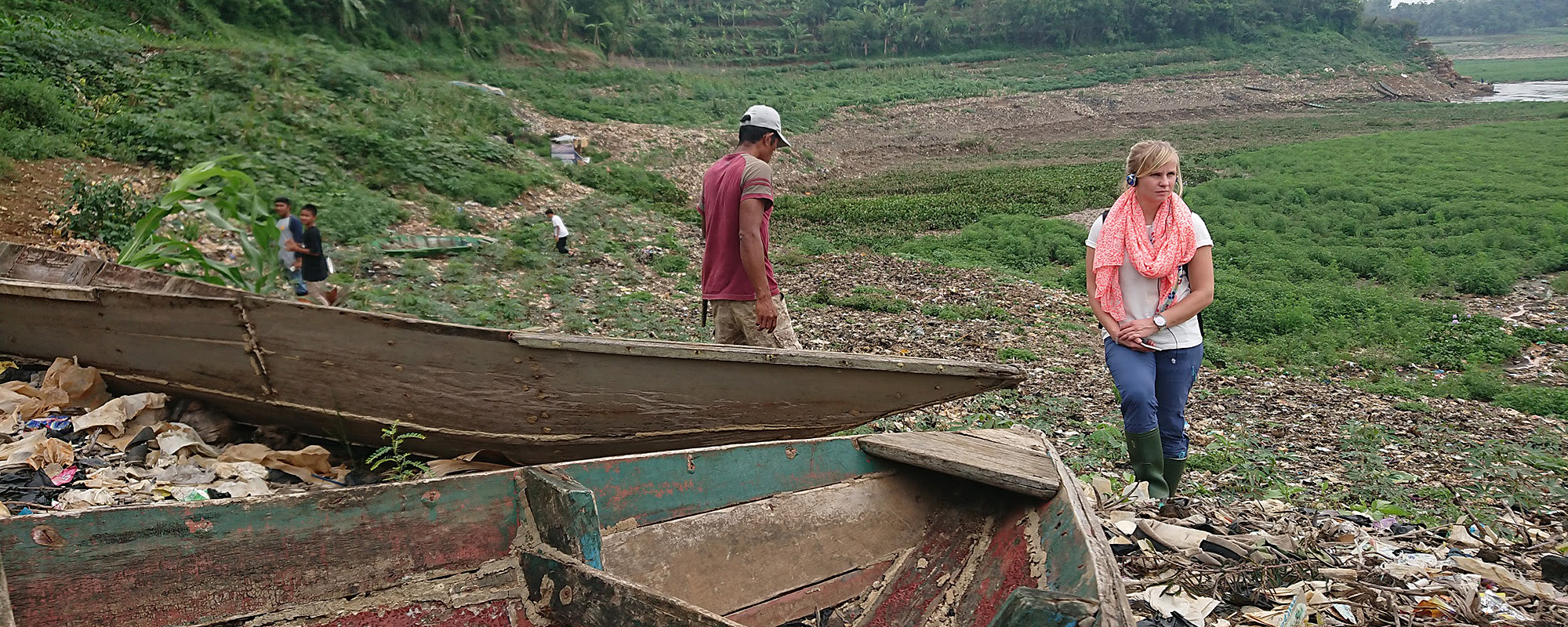"There is no "away" – A study on how to move towards a circular plastics economy", er en artikkelserie skrevet av Vilma Havas i SALT. Vilma har siden 2019 jobbet med et doktorgradsprosjekt der hun studerer den nåværende, lineære plastøkonomien, og hvordan den kan utvikles til å bli mer bærekraftig og sirkulær. I denne artikkelserien gir hun et innblikk i sitt arbeid gjennom å dele noen av sine funn og erfaringer.
In countries like Norway, where I live, the environmental impacts caused by plastic waste can feel distant. The waste management systems are relatively efficient, which is why the vast amounts of plastic waste we produce disappear from sight as soon as we’ve disposed of it.
This isn’t the case in Indonesia. Poor waste management systems combined with lack of awareness have driven the country to a state where military force is required to clean up the environment – more specifically the infamous Citarum river, which is one of the most polluted rivers in the world. I got a chance to visit the banks of this river in November 2018, during a marine litter study trip to Indonesia, arranged by Innovation Norway.
Seeing the river banks paved with plastic waste was overwhelming – even though I had seen images of these types of extremely polluted rivers before and knew therefore what to expect.
For decades, we have been treating plastics as close to worthless materials which can be disposed of after a brief single use. At the same time, we’ve been able to increase hygiene in hospitals and reduce the carbon footprint of road transport thanks to plastics. So plastics aren’t all bad, they just need to be used in applications where their features, e.g. light weight and durability, are beneficial to the society and the environment. In other words, we need to redesign the whole plastics economy, if we want to make a lasting, positive change. Currently, the plastics economy is more or less linear, as only a fraction of the plastics produced are recycled into new materials. In addition, the production and use of plastics is constantly increasing, which intensifies the negative impacts caused by the linear system.
The day we visited Citarum, the water was low, and the banks were full of plastic trash. We could find everything from food wrappers to used diapers and plastic bags spread on the ground. Usually, the river banks are also occupied by scavengers; locals who make a living out of picking plastic and selling it to recycling companies. However, on this day the banks were empty as «there was no plastic to be picked», as our local guide explained to us. The scavengers are namely only interested in the clean, robust plastics that have a value on the recycling market, rather than the contaminated, soft and mixed plastics which are worthless.

Fishing boats waiting to be taken out on the river, surrounded by waste.
These worthless plastic materials are often used for packaging, which is the biggest market segment for plastic products globally. A lot of the packaging we buy is useful, as it protects our food or hygienic products from contamination, while others have very little purpose beyond for example brand marketing. Especially in countries like Indonesia, where waste management infrastructure is generally poor or completely lacking, the need to reduce the use of unnecessary plastics is urgent – and this includes both unnecessary packaging and other plastic products that have little practical purpose and/or existing downstream solutions.
Indonesia is of course not the only country suffering from the negative environmental and health impacts caused by plastic pollution. Plastic pollution is a transboundary environmental problem that affects all of us. Plastic can be found in the deepest parts of the ocean to the highest mountain on the planet. There is simply no more room on this Earth for more mismanaged plastic waste. This is why we need to stop and rethink the plastics economy. Where does all the plastic waste we produce go? Does it end up in the Citarum river in Indonesia, or is it used for production of new plastic materials locally? Should we be producing plastic products that have no sustainable end-of-life solutions? Should we ban plastic products and if so, what should we replace them with?
I will be digging into all of these questions, and more, through my studies, and hopefully come up with some answers. I will be focusing on the Norwegian perspective, but hopefully I’ll be able to gather some experiences from other countries as well – especially those that struggle with plastic waste the most. One thing became painfully clear to me during my visit to Indonesia; there really is no «away» when it comes to plastic waste.
_____
Har du kommentarer, tilbakemeldinger eller andre henvendelser angående prosjektet, er du velkommen til å kontakte Vilma på vilma@salt.nu.
Denne studien er støttet av Norges Forskningsråd og Salt Lofoten (SALT). Veiledere på doktorgraden er Jannike Falk-Andersson fra SALT, Lone Kørnøv fra Danish Center for Environmental Assessment ved Aalborg Universitet, og Jenna Jambeck fra University of Georgia.
